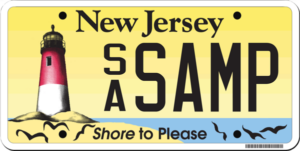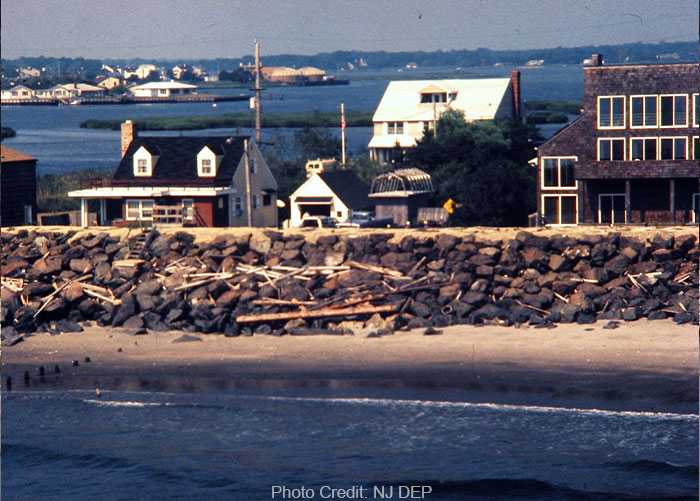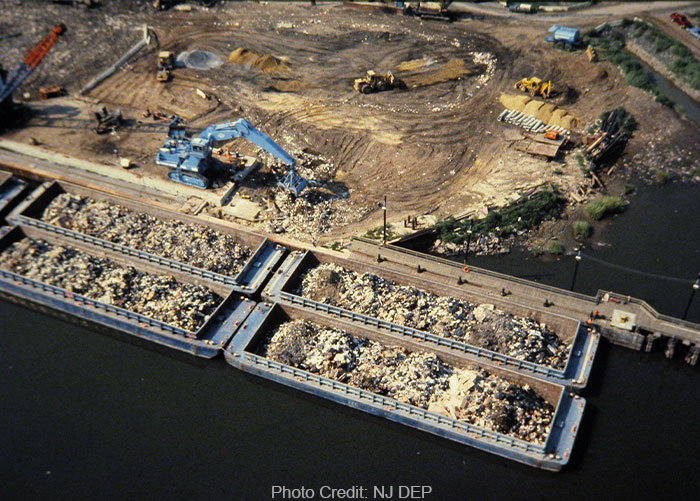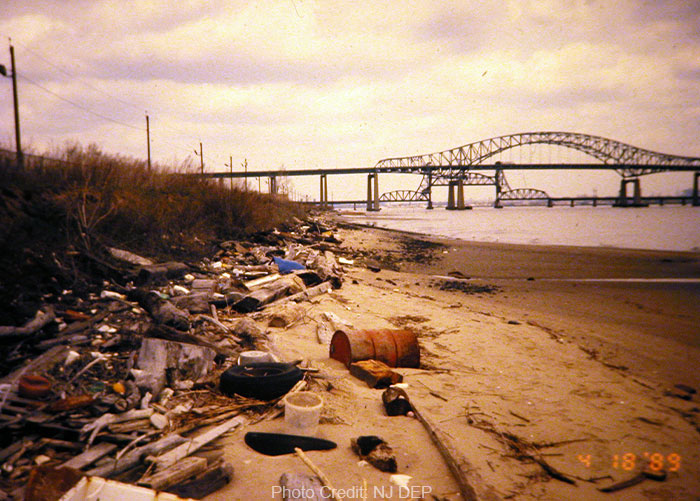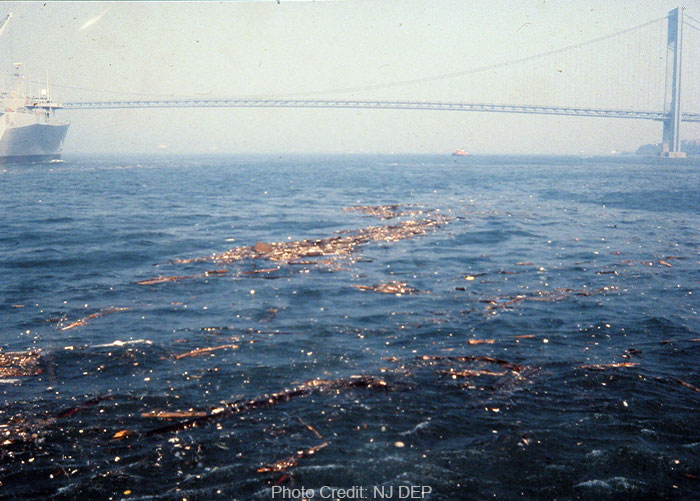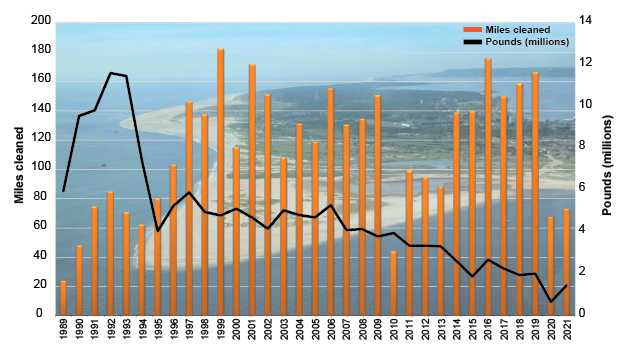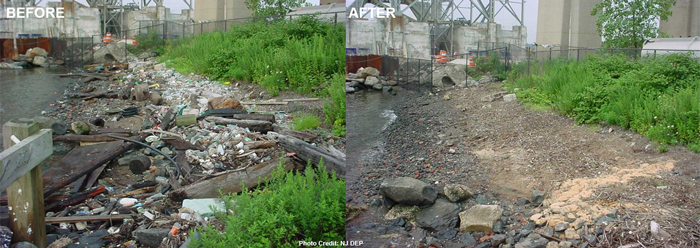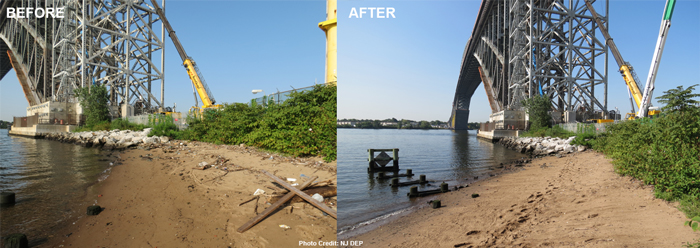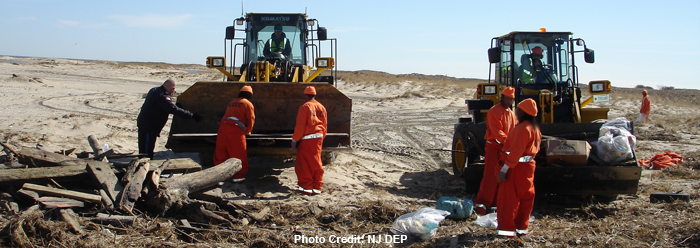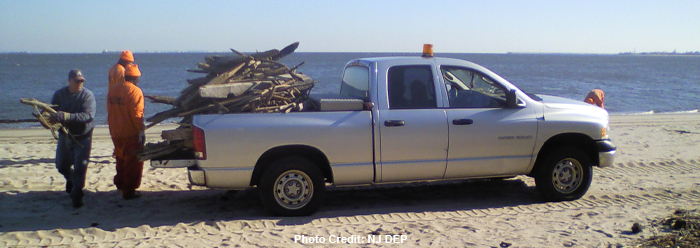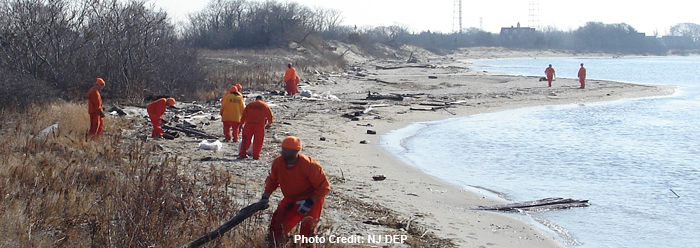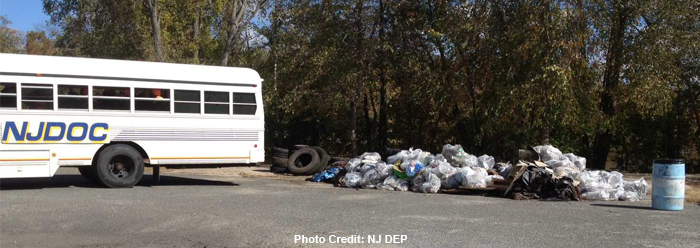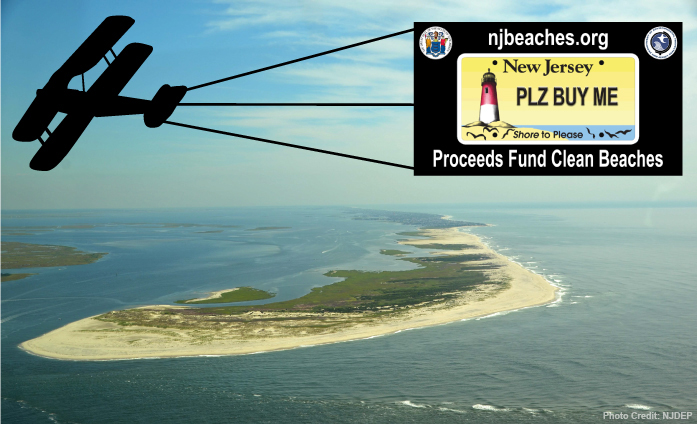
Clean Shores
You can help keep the New Jersey shore clean and preserve it for future generations by purchasing a “Shore to Please” coastal protection license plate.
These plates support New Jersey shore cleanup programs. Click on the image of the license plate to order a “Shore to Please” license plate today.
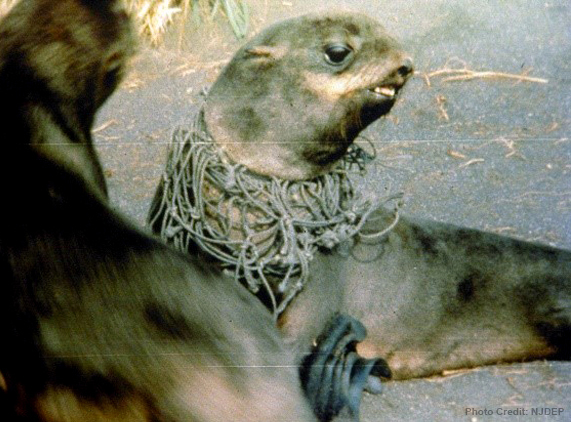
The Clean Shores program is a free statewide service that removes floatables such as wood, garbage, plastics, medical waste, and recyclables from tidal shorelines with the use of state inmate labor. The mission of the program is to preserve and enhance New Jersey’s coastal environment and natural resources by removing debris, grooming trails, planting dune grasses and aiding in emergency cleanups like fish kills and after storm events. The program also affords inmates the opportunity to give back to our communities in a tangible way.
Clean Shores operates using minimal DEP resources, yet achieves remarkable results through both dedication and by leveraging relationships with the Department of Corrections and participating county and local agencies. Cleanups support the DEP’s priority of protecting New Jersey’s waters and achieving waters that are swimmable and fishable by preventing unwanted material from damaging recreational ocean bathing beaches and the coastal environment. Without Clean Shores to remove trash and debris, this material would wash up on New Jersey’s beaches resulting in possible beach closings, potential harm to humans or wildlife, and negative publicity that could affect New Jersey’s tourism industry.
The program fosters strong partnerships across the state with the shared mission to preserve and enhance New Jersey’s coastal environment throughout the entire year. The efforts of the Clean Shores program enhance the beauty of the state’s natural resources, assure recreational bathing beaches are healthy, protect wildlife habitat in sensitive ecosystems, increase quality of life, improve human health and provide safer navigation in the state’s waterways.
Local agencies have come to rely on the assistance from this program to help coastal communities clear debris to preserve New Jersey’s coastline. The Clean Shores program cleared debris in communities affected by Hurricane Irene and Superstorm Sandy to ensure that beaches could open the following Memorial Day. The program provides labor at no cost for affected municipalities, allowing them to direct limited resources to other cleanup efforts.
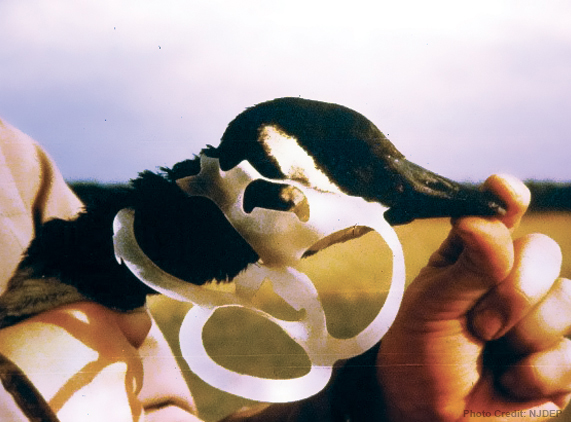
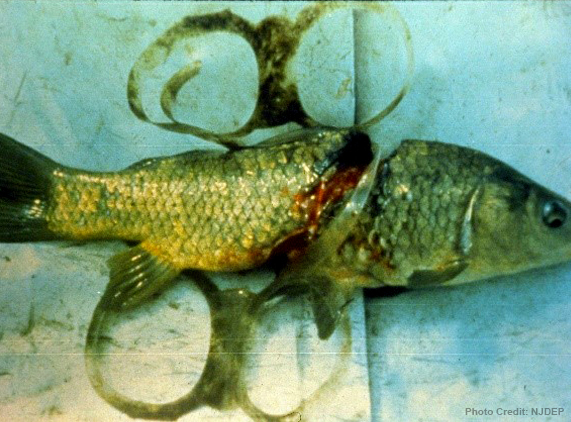
Why is this important?
Garbage, wood, and plastics end up along waterways due to tides, currents, wind and storms. Without removing this debris and floatable garbage, it can become resuspended during high tides and move along the coast onto recreational beaches, thus damaging the coast. This can become a hazard to humans, marine life, navigation, and recreation.
More than just coastal-adjacent localities are tidally influenced – many rivers and estuaries within the state experience the ebb and flood of daily tides. As such, municipalities, county parks, state parks, federal parks, and water authorities that are considered tidally influenced are eligible to participate in the Clean Shores program. Please refer to the map for a visual reference of who in the state is eligible.
The Clean Shores program was established in 1989 in response to health concerns and beach closings that occurred during the previous summer.
Until the mid-to-late 1900s, garbage was often thrown into the ocean or shipped to landfills along the coast, where much of the garbage was lost to the sea as it was transferred to land. Only a few decades ago New Jersey’s coastline looked like the images on the right.
As a result of both the Clean Shores program and advancements in garbage disposal, New Jersey’s coastline no longer looks this way. The program works daily throughout the year to maintain the debris free shorelines and prevent these items from ending up along public recreational beaches. As the graph below demonstrates, as time has passed, more miles are able to be covered by the program and less trash removed per year. However, improperly disposed garbage remains a problem that faces New Jersey.
Photo Credit: NJDEP
How can you help?
The best way to mitigate the ongoing trash problem is to properly dispose of all waste, recycle everything that you can and donate unwanted items. You can also avoid single use plastics, purchase items that have less packaging, buy in bulk and bring your own reusable containers so you don’t have to use the plastic ones provided. Bring a reusable water bottle with you wherever you go. Keep reusable bags in your car to carry purchased goods. When possible, buy items made from recycled products.
Spread the word. Let your actions be a guide. When you go to the beach, bring a container for trash. Don’t leave anything behind when you leave. Be responsible.
Volunteer! Beach sweeps and cleanups are organized by many nonprofits. Participate in one!
If you represent a municipality, county, county park, state park, federal park, or water authority and are interested in scheduling a Clean Shores cleanup, please click the button below for the program requirements. There must be enough debris in the affected area(s) to provide a day’s work. Often there is plenty of work and cleanups span several days.
Program Requirements
- It is the responsibility of the community to properly dispose of all debris collected
- Items/personnel required: dumpster, front-end loader, and operator on site during cleanup
- Toilet facility
- Lunch for the crew
- All other equipment and labor are provided by the state
Before a cleanup is scheduled, a Clean Shores program staff member will meet onsite with a staff member from the Public Works Department, or the equivalent, to conduct a reconnaissance survey to ensure that the location(s) are eligible for the program, that the terms are agreeable and the site is safe for work.
The Department of Corrections hand picks the crew each day; typically, there are at least five inmate laborers onsite and one corrections officer for supervision and transportation. The inmates chosen have received special selection for outside work by the Department of Corrections. Two facilities are used during the year, the Garden State Youth Correction Facility and Bayside Prison. Laborers from Garden State are onsite from May to October, which limits the cleanups at that time of year to the northern portion of the state. Conversely, laborers from Bayside are onsite from November to April and thus, at that time of the year, the southern portion of the state is serviced. This is subject to change.
Special Selection Requirements
- Full minimum security status
- Good behavior
- Less than two years left on the sentence
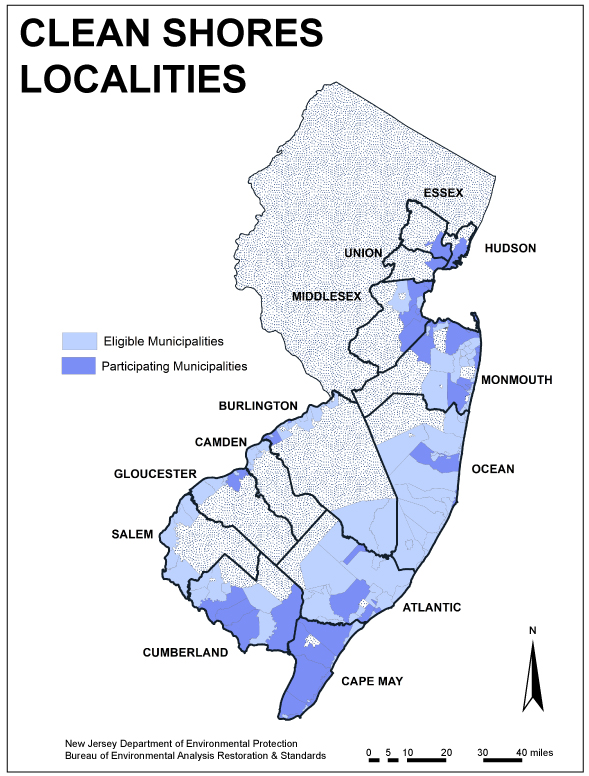
Photo Credit: NJDEP
Photo Credit: NJDEP
Below is a list of many of the program partners from throughout the state as well as the Mid-Atlantic Region.
- American Littoral Society
- Atlantic County
- Burlington County
- Camden County
- Cape May County
- Cape May Lewes Ferry
- Cumberland County
- Delaware River Basin Commission
- Essex County
- Friends of Island Beach State Park
- Gateway National Recreation Area
- Gloucester County
- Hudson County
- Liberty State Park
- Mid-Atlantic Regional Council on the Ocean
- Middlesex County
- Monmouth County
- Nature Center of Cape May
- New Jersey Department of Corrections
- New Jersey Clean Communities
- Ocean County
- Passaic Valley Sewerage Commission
- Union County
- Wetlands Institute
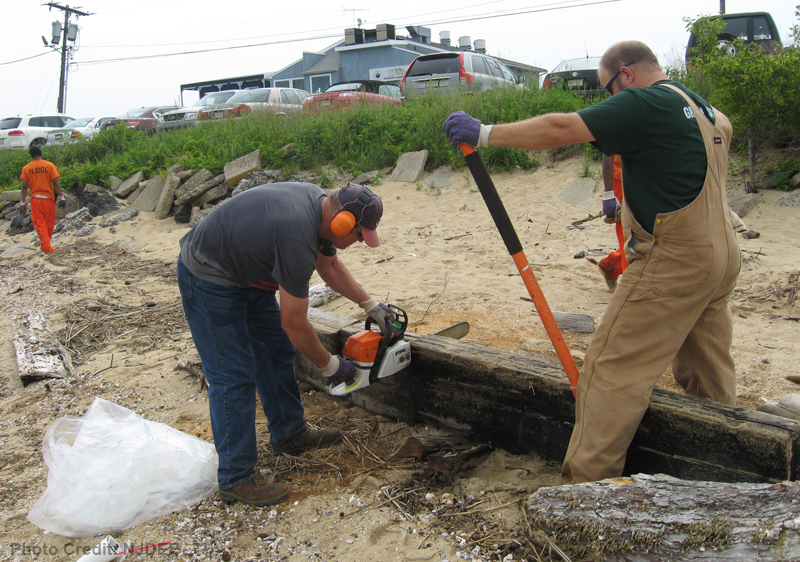
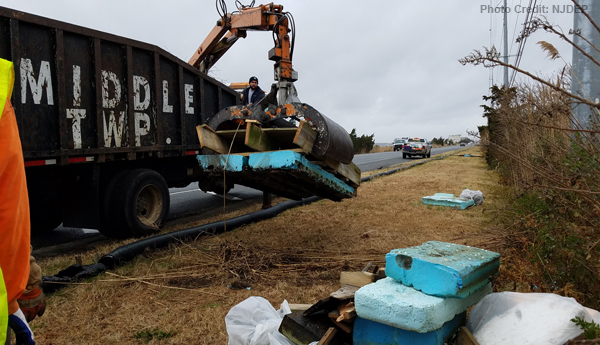
“We appreciate the efforts of the Clean Shores program and look forward to hosting the program each year.”
– Edward Stinson, Superintendent of Public Works and City Engineer, Ventnor City, New Jersey
“A joint effort to remove large pieces of driftwood and other debris from two of Keyport’s beaches was a huge success! Our location on the Raritan Bay is a natural landing point for large driftwood and floatable objects requiring frequent cleanups… The New Jersey’s Clean Shore program and DEP, NJDOC and the Monmouth County Departments of Public Works and Clean Communities staffs were excellent to work with and could not do enough to ensure a successful day. All work was performed with no impact to the public.”
– Tom Gallo, Keyport Clean Communities Coordinator
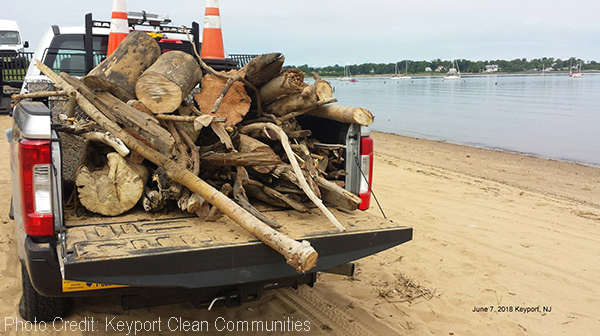
“Your program filled ten 40 cubic yard roll off containers weighing in at 73.5 tons, approximately 20 tons more than last year’s spring cleanup. Again, an undertaking of this magnitude would not have been possible without the cooperation of all those involved; obviously the New Jersey Department of Environmental Protection Clean Shores program, Monmouth County Highway Division, National Parks Service and Monmouth County Clean Communities. Please advise us when you are in the Monmouth County again and we look forward to the next project.”
– William Johnson, Clean Communities Coordinator, Monmouth County
“Thank you very much for your hard work [Clean Shores] and that of others [Monmouth County Clean Communities and Public Works Department of the Borough of the Atlantic Highlands] who participated. We appreciate it very much.”
– Adam Hubeny, Borough Administrator, Atlantic Highlands
New Jersey Department of Environmental Protection, Press Release
All funding for the Clean Shores program comes from the sale of the Shore to Please license plate. In 1993, New Jersey passed a law which allows the citizens of the state to purchase this specialty license plate to fund programs that enhance and protect the state’s coastal environment. The initial cost of the plate is $50 with an annual renewal fee of $10. You may purchase the plate at any Motor Vehicle Commission office or via online application.
Look for our banner plane during the summer months!
